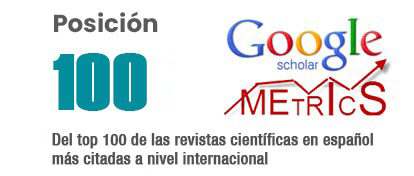The didactic ok the learning virtual communities
DOI:
https://doi.org/10.62452/4ndxkw48Keywords:
Learning virtual communities, mass media, teaching-learning process, classAbstract
In this article, he presents a large part of the theoretical contribution of the results of the research carried out by the principal author in her doctoral training. This dialectical process, with scientific techniques and methods, was developed from the aspirations of forming an education professional prepared to direct the teaching-learning process of Information Technology mediated by the virtual learning communities, their theoretical limitations and their application in practice. The result of the theoretical analysis of the bibliography consulted and related to the subject in the international and national spheres, it supplements the lack of didactic and methodological orientations that imply working with the media, reason for being of the same communities in the face-to-face classes and it contributes to elevate the quality of the planning and instrumentation of the teaching and you increase in the learning of the students.
Downloads
References
Addine Fernández, F. (2004). Didáctica, teoría y práctica. La Habana: Pueblo y Educación.
Addine Fernández, F., Calzado Lahera, D., & Páez Suárez, V. (1998). Aproximación y contextualización de los contenidos didácticos y sus relaciones. La Habana: ICCP.
Álvarez de Zayas, C. M. (1998). Categorías fundamentales de la Pedagogía como ciencia. Sus relaciones mutuas. La Habana: Pueblo y Educación.
Área Moreira, M. (2014). Las redes sociales en internet para la formación del profesorado. Razón y palabra, 13(63). Recuperado de http://www.razonypalabra.org.mx/n63/marea.html
Área Moreira, M. (2018). De la enseñanza presencial a la docencia digital. Autobiografía de una historia de vida docente. RED. Revista de Educación a Distancia, 56. Recuperado de https://www.um.es/ead/red/56/area.pdf
Cabero Almenara, J. (2006). Comunidades virtuales para el aprendizaje. Su utilización en la enseñanza. EDUTEC. Revista Electrónica de Tecnología Educativa, (20). Recuperado http://www.edutec.es/revista/index.php/edutec-e/article/viewFile/510/244
Calvache, C. A. (2015). Perspectiva sistémica de la comunicación humana y sus desórdenes. Ciencias de la Salud, 13(3), 327-329. Recuperado de http://www.scielo.org.co/pdf/recis/v13n3/v13n3a01.pdf
Cuba. Partido Comunista de Cuba. (2016). Lineamientos de la Política Económica y Social del Partido y la Revolución para el período 2016-2021. La Habana: PCC.
Expósito Ricardo, C. (2001). Algunos elementos de la Metodología de la Enseñanza de la Informática. La Habana: Pueblo y Educación.
Gairín Sallán, J. (2006). Las comunidades virtuales de aprendizaje. Revista Educar, 37, 41-64. Recuperado de https://www.raco.cat/index.php/Educar/article/viewFile/58020/68088
Guirado Rivero, V. C. (2014). Recursos didácticos y sugerencias metodológicas para la enseñanza-aprendizaje de los escolares con necesidades educativas especiales: texto para estudiantes de las carreras Licenciatura en Educación Especial y Logopedia. La Habana. Pueblo y Educación.
Harasim, L., Hiltz, S.R., Teles, L., & Turoff, M. (1995). Learning Networks. Cambridge: The MIT Press.
Johnson, D. W., & Johnson, R.T. (1999). Aprender juntos y solos. Buenos Aires: Aique Grupo Editor, S.A.
Kaplún, M. A. (2001). A la educación por la comunicación. La práctica de la comunicación educativa. Quito: Ediciones CIESPAL.
Klingberg, L. (1978). Introducción a la didáctica general. La Habana: Pueblo y Educación.
López Fernández, R. (2010). Componentes para la estructura didáctica de un curso de Educación a Distancia usando como herramienta las plataformas gestoras. (Tesis doctoral). Cienfuegos: Universidad de Cienfuegos.
Meirinhos, M., & Osório, A. (2009). Las comunidades virtuales de aprendizaje: el papel central de la colaboración. Pixel-Bit. Revista de Medios y Educación, (35), 45-60. Recuperado de http://www.redalyc.org/articulo.oa?id=36812381004
Organización de Naciones Unidas. (2016). Agenda 2030 y los Objetivos de Desarrollo Sostenible. Una oportunidad para América Latina y el Caribe. Santiago de Chile: CEPAL.
Palloff, R., & Pratt, K. (1999). Building learning communities in cyberspace. San Francisco: Jossey-Bass.
Vaughan, N. D., Cleveland-Innes, M. & Garrison, D. R. (2013). Teaching in Blended Learning Environments: creating and sustaining communities of Inquiry. Athabasca: AU Press.
Vygotsky L. S. (1981). Pensamiento y lenguaje. La Habana: Pueblo y Educación.
Downloads
Published
Issue
Section
License
Copyright (c) 2019 Liéter Elena Lamí Rodríguez del Rey, Vania del Carmen Guirado Rivero, María Elena Rodríguez del Rey Rodríguez, Jorge Luis León González (Autor/a)

This work is licensed under a Creative Commons Attribution-NonCommercial-ShareAlike 4.0 International License.
Authors who publish in Revista Metropolitana de Ciencias Aplicadas (REMCA), agree to the following terms:
1. Copyright
Authors retain unrestricted copyright to their work. Authors grant the journal the right of first publication. To this end, they assign the journal non-exclusive exploitation rights (reproduction, distribution, public communication, and transformation). Authors may enter into additional agreements for the non-exclusive distribution of the version of the work published in the journal, provided that acknowledgment of its initial publication in this journal is given.
© The authors.
2. License
The articles are published in the journal under the Creative Commons Attribution-NonCommercial-ShareAlike 4.0 International License (CC BY-NC-SA 4.0). The terms can be found at: https://creativecommons.org/licenses/by-nc-sa/4.0/deed.en
This license allows:
- Sharing: Copying and redistributing the material in any medium or format.
- Adapting: Remixing, transforming, and building upon the material.
Under the following terms:
- Attribution: You must give appropriate credit, provide a link to the license, and indicate if any changes were made. You may do this in any reasonable manner, but not in any way that suggests the licensor endorses or sponsors your use.
- NonCommercial: You may not use the material for commercial purposes.
- ShareAlike: If you remix, transform, or build upon the material, you must distribute your creation under the same license as the original work.
There are no additional restrictions. You may not apply legal terms or technological measures that legally restrict others from doing anything the license permits.




